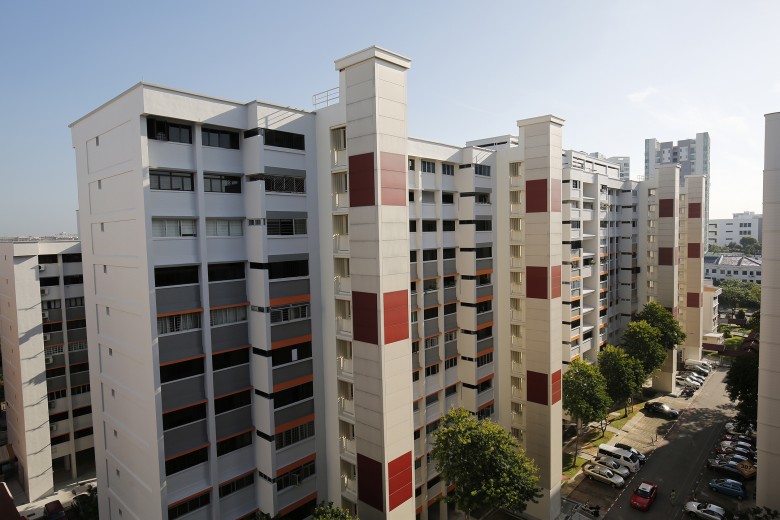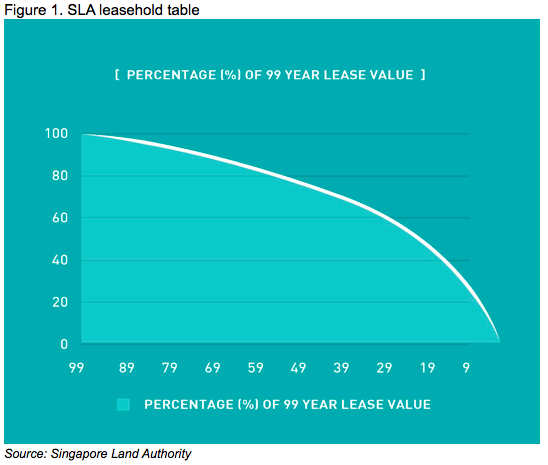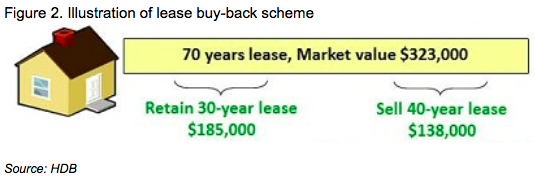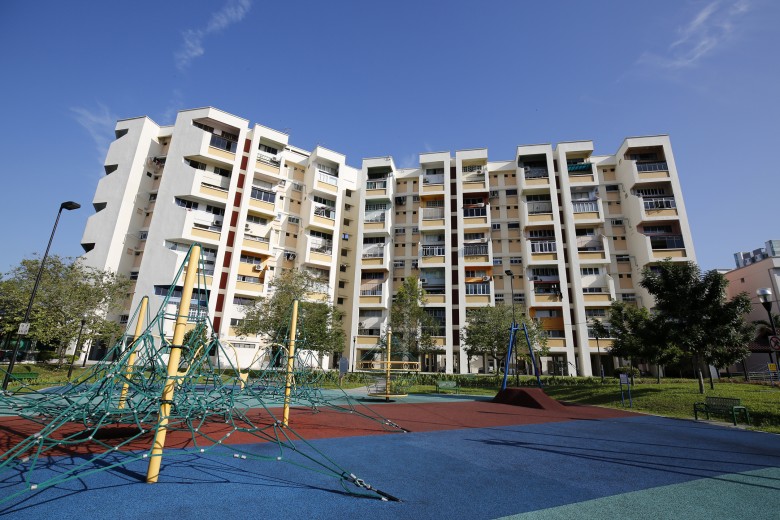When you take all the taxes that people pay and all the benefits that they receive through our different schemes, how does it add up? It's basically a progressive system and one that's being made more progressive, where the higher-income households contribute the bulk of the taxes and the lower-income households receive the bulk of the benefits. But it's also one where the middle income receives more benefits than it used to.
If you take the top 20 per cent of households, they pay 55 per cent of all taxes, when you add up income tax, property tax, GST, car taxes, maid levies, everything. And they receive 12 per cent of the benefits. If you look next to the middle 20 per cent of households, they pay 11 per cent of all taxes and they receive 20 per cent of all benefits. When I say middle 20 per cent, I mean those between the 40th and 60th percentile. And the lowest 20 per cent of households pay 9 per cent of all taxes, largely through the GST, but they receive 27 per cent of all benefits. This is a progressive system.
And I should add that we have also shifted significantly in the weight being placed on structural transfers, permanent schemes as distinct from temporary schemes that we're able to afford when the Budget is in good shape. Ninety per cent of our transfers last year comprised permanent schemes.
The system is not just about redistributing from the rich to the poor, it's also about the middle income group. Very importantly, the middle-income group in Singapore are net beneficiaries of our system. And there's been a very significant increase in the amount of benefits the middle-income group have got over the last 10 years. For every dollar of tax paid by the middle-income group, they now get a bit more than $1.70 back.
The benefits that our middle-income group get are not like what you see in the Scandinavian countries or the United Kingdom. Some of them have free health care, free tertiary education, but they are paying for it. And in most of these societies, with the Scandinavian countries being a classic example, in fact their tax systems are not particularly progressive. They rely mainly on the VAT (value-added tax) and high income tax for everyone to be able to flow back the benefits.
Everyone is paying for the free benefits that they're getting. And when you add it all up, the benefits they get from a dollar of tax they pay in the middle-income group is in fact less than ours.
We're a low-tax regime. We try to keep the burden of taxes on the middle-income group low. We target our benefits in health care, in education, in every area for the low-income group and the middle-income group. Everyone co-pays for what they are getting, so we know that nothing is for free. We co-pay, we keep taxes low and the net benefits are ones which the middle-income group gains from.
Now let me go on to explain what this adds up to in terms of our thinking, our values, our philosophy. We have tilted our system deliberately to help the lower- and middle-income group, and in the last five years there's been a significant tilt. The Government is playing a more active role in redistribution. But the key to building a stronger society is not in how much we're doing to redistribute. It is about how we strengthen the values that undergird and sustain a fair and inclusive society.
It's not how much we're doing but how we do it. And whether what we're doing helps to strengthen the values and the habits that sustain the fair and inclusive society.
A stronger social compact
AT THE heart of it all, we're seeking to build a stronger social compact for the future, a compact where personal and collective responsibility go hand in hand. Our approach is quite different from the cradle-to-grave welfarism that was developed over 50 or 60 years in many of the advanced countries. Our approach is about empowering people and aspirations, and rewarding responsibility throughout life. It's about encouraging and empowering people to learn at every age, to work, to take second or third chances and to make meaningful contributions through our careers, whatever the job.
Helping people to own a home and, whether it's breadwinners or homemakers, to raise the next generation. And helping people, helping everyone to make the most of life even in our senior years.
It's also about developing a broader cultural responsibility in our society. It's not just about everyone doing their part, rich or poor. It's also about being able to count on each other, and those two things go together. We are able to count on each other now or in the future only if everyone plays their part, if everyone plays their responsible role.
Our whole approach therefore has been to avoid a zero-sum game between personal and collective responsibility, and get a compact where personal and collective responsibility in fact reinforce each other.
We cannot solve problems if we leave it entirely to the market or the natural workings of society. It will lead to widening income gaps that reflect not just people's different abilities and efforts, but also the advantages and disadvantages of the backgrounds they start with. And it will sap the morale of our society if we just leave it to the market to sort things out. Neither can we think the social policy interventions alone can create a fair and cohesive society without a culture of personal responsibility in the family, in education, at work and saving for our future. It will not create a fair and inclusive society, and it will sap the vim and energy of our society at every level.
So I think we need some humility, actually in every society we need some humility as to what works in social policy. Take truths from both the left and the right, but we must have some humility because one of the lessons we've learnt from the policy interventions in the more mature societies is that lasting improvements in society are not easy to achieve. And it's certainly not just a matter of putting in more government resources.
Our real task is to find ways to help people not just by providing them with more resources but helping them to rebuild family lives, making sure we've got empathetic teachers, mentors, community volunteers, and helping them to build circles of friends and peers around them, people with a positive and aspiring outlook on life. We must preserve our Singapore ethic of work, effort and responsibility and collective responsibility for the community. I think that sums it up.
Sustainable spending
LET me now talk about a critical issue which is sustainability.
Fairness is not just about what we do today, how we distribute taxes and benefits, who takes what share. It's not just about the current generation. We must build a fair and inclusive society for today's generation, our children's generation and generations into the future. That's the difficult task.
There are countries that are more progressive than us. There are countries that in fact achieve a very high degree of transfers and redistribution. But it's worth watching them and how they change over time, how their values change and also whether they've been able to sustain what they're doing. The whole experience of the UK, Europe and to some extent the US has been one of building up unsustainable social welfare systems.
The UK is a very good example. With each electoral term, each party and each government coming into power has increased social spending, particularly on the elderly. It's a vote buyer. But the system is now unsustainable and they are paying the price. Unfortunately the ones who are paying the price are the young and the lower-income group. Spending in the UK in the last few years has been cut for children. In fact, between 2009 and 2012 - I don't have the more recent data but I know that it's been intensified austerity - real spending per child in early education fell by 25 per cent.
Spending was cut on programmes to strengthen childcare, subsidised early education for disadvantaged children, significant cut, more than a 30 per cent cut on these early education initiatives. Spending on social services was cut. And it's not as if it was to help poor retirees because the whole weakness of their system was to extend benefits to everyone, including the upper middle-income group and the rich.
So the rich get generous pensions. They get winter fuel allowances. They get free transport. They get everything. And even a Conservative government today has committed to preserving those benefits for the rich and the upper middle-income group at the expense of the young and the poor. That's how inequitable it is.
We've got to sustain a fair and inclusive society for generations, not one election at a time. The US faces the same situation. It has lower taxes than many European countries, but the same basic flaw of looking at things short-term and through a highly political lens. What's happened in the US is they - and the Obama administration has recognised this - are severely constrained for the future in investing in their future.
The reason is because, first, the interest on the debts they've accumulated is going to grow as a share of their budget. Second, the entitlements that have been promised are also going to grow because people are getting older.
An OECD report in fact stated quite forthrightly, governments will have to make tough choices about how fair it is to ask current workers to pay taxes to support pension payments of a level that they themselves won't enjoy. So we've to avoid these basic political flaws. We have to avoid them.
I'm glad members have raised caution and have asked the right questions, which we've to keep asking as we move along. And we've to make sure that we never cross the red line of failing to balance our Budget within each term of government, ensure sustainability, ensure we never run down our reserves. This is why in fact we've written rules into our Constitution. We've gone further than most other countries by writing the rules into the Constitution to prevent the Government from running a deficit within its term of government, accumulated deficit - except in a crisis, when you have to go to the President and get his permission to draw on reserves.
We've written it into the Constitution so that it's enshrined, it's part of our political culture, no matter who's in government.
Let me clarify that the government Budget has been in a healthy position. For this year, the deficit is almost entirely due to funds being set aside for future investments. It's not a deficit of spending over revenues. It's a deficit because we're setting aside funds that we've earned in this term of government for the future. And until this year, during this term of government, we've not recorded a deficit in any year before setting aside funds for the future. For example, the small deficit we ran last year would have been actually a significant surplus had we not set aside money for the Pioneer Generation Package.
So essentially what we've been doing is prudent budgeting. We've had a temporary surplus in revenues, particularly because of the revenue boost from the property cycle, and rather than spend those revenues in the current term, which is what some other governments do when they've got a bonanza in revenues, we have set it aside. And that should remain the way we go about fiscal planning in the future.
When you have a temporary boost of revenues and you know the cyclical reasons why your revenues exceed your spending, set it aside for the future, don't spend it immediately or don't spend all of it immediately. That way we avoid feast and famine in our spending.
Temasek's investment strategy
LET me go on to two major issues that arose in the debate that relate to sustainability. The first has to do with the net investment returns framework and the use of reserves, and the second is the CPF system as well as Silver Support.
Several MPs raised questions about sustainability of our system of drawing income from reserves and making sure that we're not disadvantaging future generations. The net investment returns (NIR) framework in fact underlines our commitment to preserve the value of our reserves and to allow it to grow with the economy over the long term. It allows the Government to tap part of the investment returns for current spending and it strikes a fair balance between present needs and the interest of future generations.
We put a lot of thought into it when we moved the constitutional amendment in 2008. It ensures that we spend from our reserves in a disciplined and sustainable way, first by spending at most 50 per cent of expected long-term returns, which means that at least 50 per cent are kept in reserves.
Second, by spending based on real returns, not nominal returns, so that we preserve the international purchasing power of our reserves. Otherwise, if we have high inflation globally and you earn higher nominal investment returns and you spend more on that basis, actually what you're doing is reducing the real value of your reserves for the future.
And we've also provided stability in the NIR by spending based on expected long-term returns, not actual returns, and this recognises that actual returns will be more volatile than long-term expected returns but we smooth our asset base.
This is an important point - that the two ways in which we achieve stability over time, first is spending based on expected returns rather than actual returns, which can be volatile, but second, we also smooth our asset base. So, for instance, if there's a boom in the asset markets, a boom in asset prices, and the value of our reserves goes up, the value of the asset base goes up, we don't spend on the basis of that boom in asset prices, we smooth the asset base so as to discount the latest changes in prices.
So if there's a boom in asset prices, it doesn't mean you spend more NIR because we do a smoothing of the asset base. So these are rules that we've written in that help ensure that there's a fair balance between current and future generations.
There have also been some questions understandably in the media about whether bringing Temasek into the NIR framework will impact Temasek's investment strategy. And the same question can be asked about the GIC and the MAS. So let me assure members that this will not be the case for Temasek, just as it is not the case for the GIC and the MAS.
The NIR framework provides a formula to work out how much the Government can spend from reserves. That's what the NIR framework is about. It's not based on actual returns but on the expected long-term real rate that we expect our investment entities to earn within the framework. So it is not a dividend policy in disguise that determines how much cash Temasek has to pay the Government each year, and if anything, by focusing on expected long-term returns we ensure that at no time in the future does the Government put pressure on our investment entities to sell assets, realise capital gains and pay more dividends. It keeps the investment strategies independent of the spending rule of government.
The natural question that arises, of course, is that if the Government is spending on the basis of expected returns, which will not year by year be matched by actual returns, where then does the Government obtain the funds, the cash flow for the NIR to go into the Budget? This is a liquidity management issue, not to do with the spending rule and not to do with investment strategies or investment entities.
It's a liquidity management issue which I had addressed in Parliament when we first introduced the NIR framework, and I won't go into the details again but we have a variety of sources of liquidity and cash flows that will enable us to manage the Government's liquidity needs independent of the investment strategies of the three entities - Temasek, GIC and MAS. So let me assure you that what we are doing does not change investment strategy in the least.
The strengths of the CPF
I GO on now to the second important issue in sustainability, which is the CPF system and Silver Support. The CPF system is different from the main systems that we see abroad. We've tried to avoid the major disadvantages of these other systems while being able to take some of the advantages.
The CPF system is both individual and collective. It is first and foremost built on individuals' savings and responsibility. But there's a strong element of collective responsibility. The Government provides support through the Budget to lower-income members and provides assurance to all. And through CPF Life, we are pooling risks to support one another in the face of life's uncertainties throughout retirement.
It is progressive, like most of the collective pension schemes. But it is financially sustainable, unlike the collective pension schemes. It places no investment risk on the individual, unlike the defined contribution schemes of individual retirement accounts.
The reason the CPF system is both progressive and sustainable, which is a rarity, is because the transfers that take place in the CPF are from the government Budget, not transfers from one generation to the next. Or promises made to the current generation which eventually have to be funded by the next generation. It is transfers that are achieved through the government Budget - and a government that has a Triple A rating.
That is the strength of the CPF system. It is sustainable, it is progressive but it achieves its progressivity through transfers from a Triple A-rated Government. And that's why it's important that we retain a whole system of fiscal discipline, prudence and planning for the future. It keeps the CPF system both progressive and sustainable.









